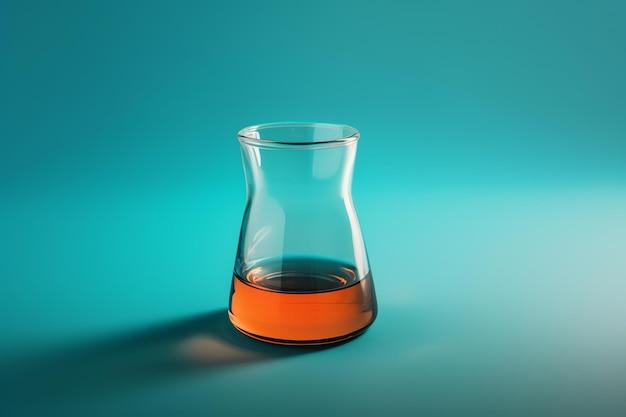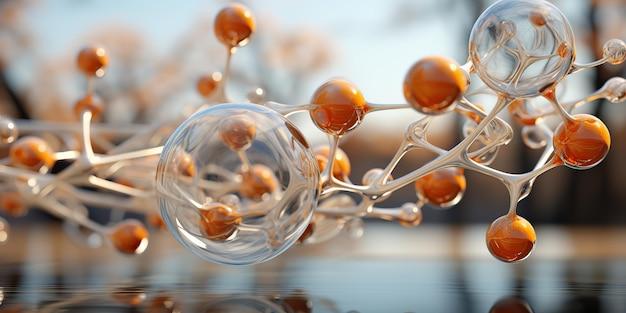Have you ever wondered why certain chemical reactions result in vibrant color changes? In the world of chemistry, indicators play a vital role in detecting and measuring the presence of acids and bases. One such indicator is methyl orange, a dye that undergoes mesmerizing transformations when exposed to different pH levels. In this blog post, we will delve into the fascinating world of methyl orange and explore what happens when acid is added to this unique compound.
Methyl orange, also known as C14H14N3SO3Na, is an organic compound primarily used as an acid-base indicator. But what exactly is an indicator? Simply put, it is a substance that changes color in response to changes in the acidity or alkalinity of a solution. Methyl orange is particularly renowned for its ability to shift its hue depending on whether it is in an acidic or basic environment.
In this exciting journey of chemical reactions, we will uncover the answers to questions like: Is methyl orange a natural indicator? What happens when acid is added to methyl orange? How does methyl orange behave when mixed with lime juice, HCl, or NaOH? Join us as we embark on this colorful adventure into the world of methyl orange and witness firsthand the magical transformations that occur when acid comes into play.
So, let’s dive into the world of methyl orange and explore its captivating color changes when faced with the enchanting power of acid!

What Happens When Acid is Added to Methyl Orange
Understanding the Acidic Encounter
Prepare for a color-changing adventure as we dive into the fascinating world of methyl orange and its captivating reaction to acid. Get ready to witness an invisible cloak being ripped off, revealing a vivid transformation that will leave you in awe.
The Low pH Showdown
When acid and methyl orange meet, it’s like a clash between two titans in the chemical realm. Methyl orange, a dye with a distinct orange hue, suddenly finds itself on the battleground of acidity. And oh boy, does it put on a show!
The Unveiling of a Hidden Secret
As the acid infiltrates the methyl orange kingdom, a hidden secret is exposed. Methyl orange has a special trick up its sleeve – it’s capable of undergoing a remarkable metamorphosis. In the presence of acid, its vibrant orange hue dramatically morphs into a vivid crimson red. It’s as if the dye suddenly puts on a feisty attitude, embracing the acidic challenge with gusto!
The pH Indicator Extraordinaire
Methyl orange’s stunning color transformation isn’t just for entertainment purposes. Its true superpower lies in acting as a pH indicator. In simple terms, it’s like having a chemical chameleon that reveals the level of acidity in a solution just by changing its color.
The Acidic Threshold Revealed
You might be wondering how this enchanting color change occurs. Well, the secret lies in the acid-base balance. When an acid is added to methyl orange, the pH level drops and the solution becomes more acidic. Methyl orange, being the quirky dye that it is, chooses this moment to switch from its familiar orange shade to an electrifying crimson red.
pH Values and the Methyl Orange Dance
The color transition of methyl orange is dependent on the specific pH range it encounters. In the presence of highly acidic solutions with a pH below 3, methyl orange radiates a vibrant red color. As the pH level rises above 4, it begins to fade back to its original orange shade, bidding farewell to the acidic party.
Conclusion: A Colorful Acidic Performance
In a world where chemical reactions can be dry and uneventful, the dance between acid and methyl orange breaks the mold. With its captivating color transformation, methyl orange showcases the wonders of chemistry in a visually appealing and entertaining way. So, next time you witness methyl orange turning into a striking crimson red, appreciate the magic happening at the molecular level – a true spectacle brought to you by the chemistry gods!

FAQ: What happens when acid is added to methyl orange
In the world of chemistry, there’s always room for a little color and excitement. And when it comes to experiments with indicators, few are as vibrant as methyl orange! So, if you’ve ever wondered what happens when acid is added to methyl orange, you’ve come to the right place. In this fun and informative FAQ-style article, we’ll explore the ins and outs of this quirky chemical reaction. Get ready to dive into the colorful world of methyl orange and discover why it’s a favorite among chemists!
Is Methyl Orange a Natural Indicator
Methyl orange is not exactly a product of Mother Nature. It’s actually a synthetic compound created in the lab. However, this doesn’t make it any less fascinating! In fact, its bright orange color makes it stand out in any chemistry experiment, giving an extra dose of pizzazz to our lab coats.
When Methyl Orange Meets Lime Juice: What’s the Color
Ah, the magical encounter between methyl orange and lime juice! When these two come together, they create a delightful transformation. The vibrant orange of methyl orange takes a U-turn and turns into a lively pinkish-red hue. It’s like a kaleidoscope of colors, but in a chemistry flask!
What Happens When Acid Takes Center Stage
Now, let’s address the star of the show: acid! When acid is added to methyl orange, things can get pretty wild. Picture this: as soon as the acid gets cozy with the methyl orange, the bright orange color takes a swift exit and makes way for a striking red. It’s as if the acid is saying, “Move over, orange! Red is the new reigning champ here!”
Why Use Methyl Orange Indicator in HCl and Na2CO3 Titration
Ah, the mysterious world of titrations! In the presence of hydrochloric acid (HCl) and sodium carbonate (Na2CO3), methyl orange is the indicator of choice for many chemists. This incredible compound acts as a color-changing chameleon, shifting from a vibrant orange in the presence of a base to a cheerful red in the presence of an acid. With methyl orange leading the way, chemists can precisely determine the acid-base balance in their experiments.
What’s the Color of Methyl Orange in Acid
When it comes to playing with acids, methyl orange knows how to put on a show. In the presence of an acid, this feisty compound takes on a brilliant shade of red, as if it’s performing a passionate tango right in your test tube. It’s a sight to behold and a testament to the wonders of the chemical world!
The Thrilling Dance of Methyl Orange and NaOH
Now, let’s take things up a notch. Imagine you add even more hydrochloric acid (HCl) to a solution of methyl orange and sodium hydroxide (NaOH). Brace yourself for an exhilarating chemical tango! As the acid crashes the party, the vibrant orange of methyl orange morphs into a fiery red, reminding us that chemistry can be as unpredictable as life itself.
And there you have it! The captivating transformation of methyl orange when acid joins the action. From its vibrant orange hues to a stunning shade of red, this compound never fails to leave its mark. So, the next time you’re in the lab, grab some methyl orange and let the chemistry dance begin!
